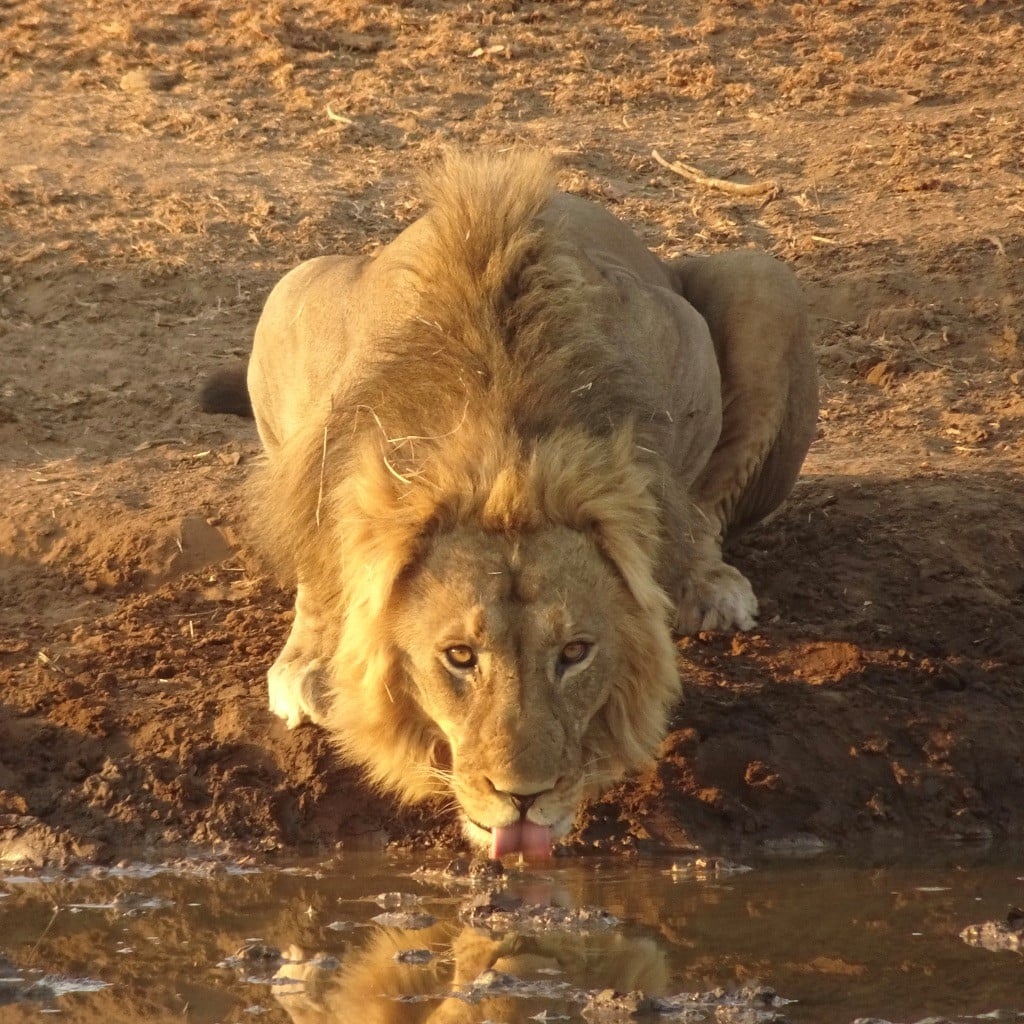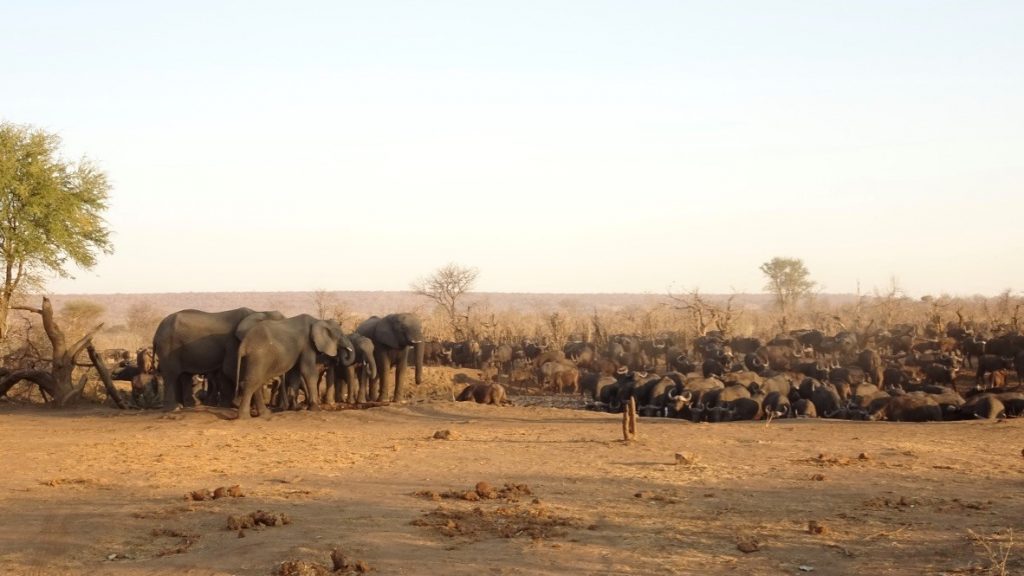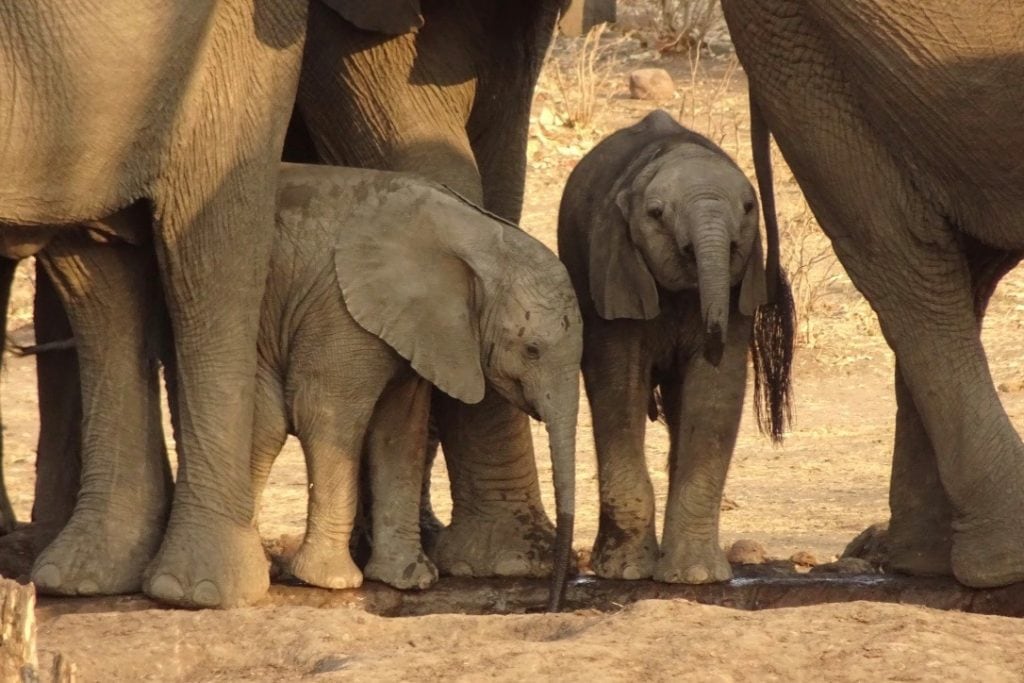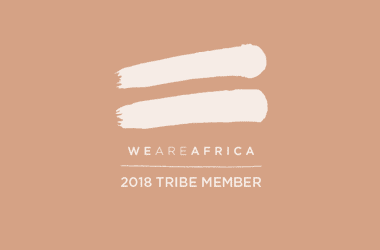September started exactly as it intended to go on, with lion sightings. To set the scene, with rainfall being a 3rd of average in some areas regionally, water is scarce, and the bush is generally very dry, and so the density of wildlife in general within Matetsi Private Game Reserve is increasing. The dry bush allows for good visibility, and wildlife are drawn to water holes throughout the day.

Most of the lion sightings were in the northern section of the property and on Westwood vlei. There are thought to be at least two large prides, along with a pair of younger adult male lions. The guides had suspected that there were young cubs in one of the prides, and mid-month the cubs were sighted. The prides were generally quite relaxed, though on one occasion the pride with the young cubs was chased from a water hole by a herd of elephants!



There were a number of buffalo kills, including two on the same day! One by the pair on Westwood vlei, and the other by the pride of 11 in the north. One particular sighting allowed guests the opportunity not just to see lion on a kill, but later hyena on the kill, and then vultures in great numbers.

Buffalos in large herds (the most accurate count stated “++++“ ) were seen regularly throughout early and mid-September, moving through the vlei systems. Senior guide, Ophious, shared a video of two different herds joining together with great excitement. Later in the month, the buffalos moved into the north-western block around our western boundary.

Three dugga-boy buffalos remain close to camp, and we suspect the others may have joined with a larger group of males, who are a little braver and move further from the camp within the north-eastern section of the property.

Elephants abounded through the vlei systems and the forests. The huge number of elephants is putting pressure on the boreholes that pump to the waterholes, and the conservation team are working around the clock to keep the water flowing.

Otherwise, populations of giraffe, zebra, wildebeest, sable, roan antelope, impala, warthog, baboons, monkeys (etc) are thriving. And despite the frequent lion sightings, there were a good number of leopard sightings, confirming that our resident leopards are still roaming in their usual areas.

On and in the water. crocodiles resided on the sand banks and rocks on the islands across from the lodge. A pod of hippos settled near the jetty site. Elephants were often seen swimming across to the lush islands to graze during the day.

Interesting Sightings
A python that had been killed by a honey badger. The badger was not seen, however, from the remains of the snake and the tracks, the story could be pieced together.
2 honey badgers and a porcupine (!) were sighted drinking one evening at waterhole named Jedson/Robinson. In the true “Matetsi Magic” way, senior guide, Ophious was with a family by the name Robinson. The family, although they are no relation to Jed Robinson – who was instrumental in establishing many of the boreholes, were delighted by the coincidence.
Our nocturnal species continue to delight, the African Scrub Hare, Spring Hare (AKA “African Kangaroo”), along with Sharpe’s Grysbok and Duiker are the most common, with particularly frequent sightings of serval as well.
The most exciting sighting for many of us this month was not actually any of the incredible lion sightings, or leopard encounters, or even the coincidental porcupine (though many of us haven’t had an opportunity to see one). The sighting that brought tears to some of our eyes and was the talk of the team, was a simple sighting of Tsessebe. They were sighted on 27 Sept 2019, along with Roan, Sable and Zebra at Charles pan in the southern section of the property. Ian, our conservation manager, managed to capture an image with his phone, just clear enough to confirm the sighting. To put the significance of this sighting in context, Tsessebe have not been sighted in the area since around 2010 – their return is another significant milestone in the Matetsi Victoria Falls conservation story. Those that knew Matetsi “back in the day” knew the Tsessebe would come back as nature restores herself, with our care and support. And now they have returned. They have been sighted since, and we hope they will settle, along with the Roan, that are known to move up from the south in these drier months.

Many thanks to our team and guests for the photo contributions this month. Particularly, Crawford, Simba, Sangweni, Ophious, Ian, and Jono.








